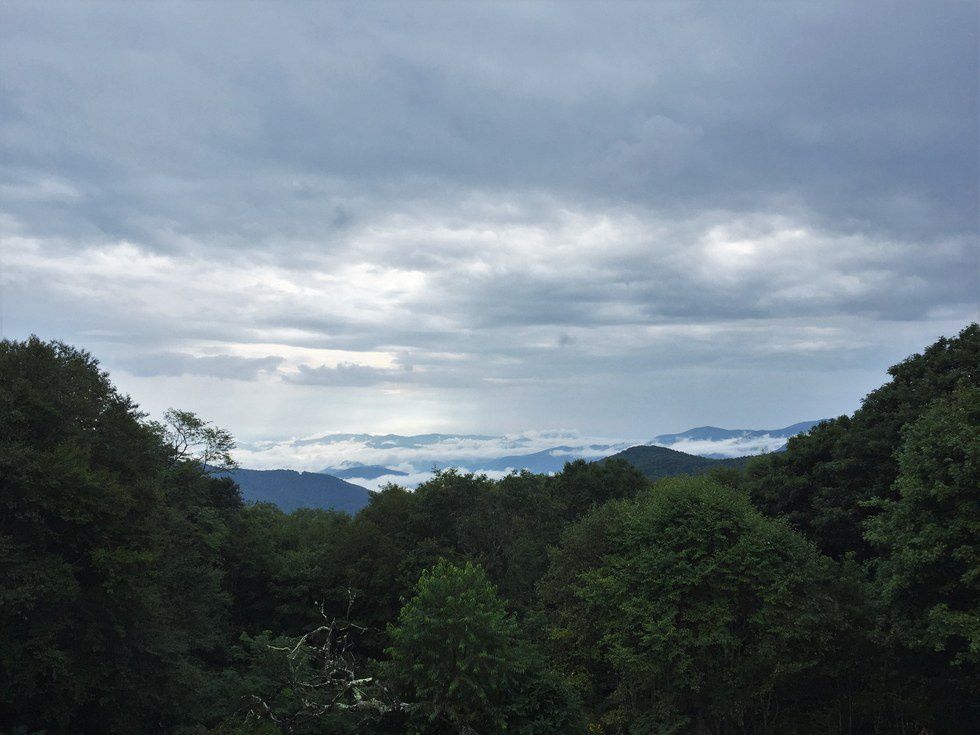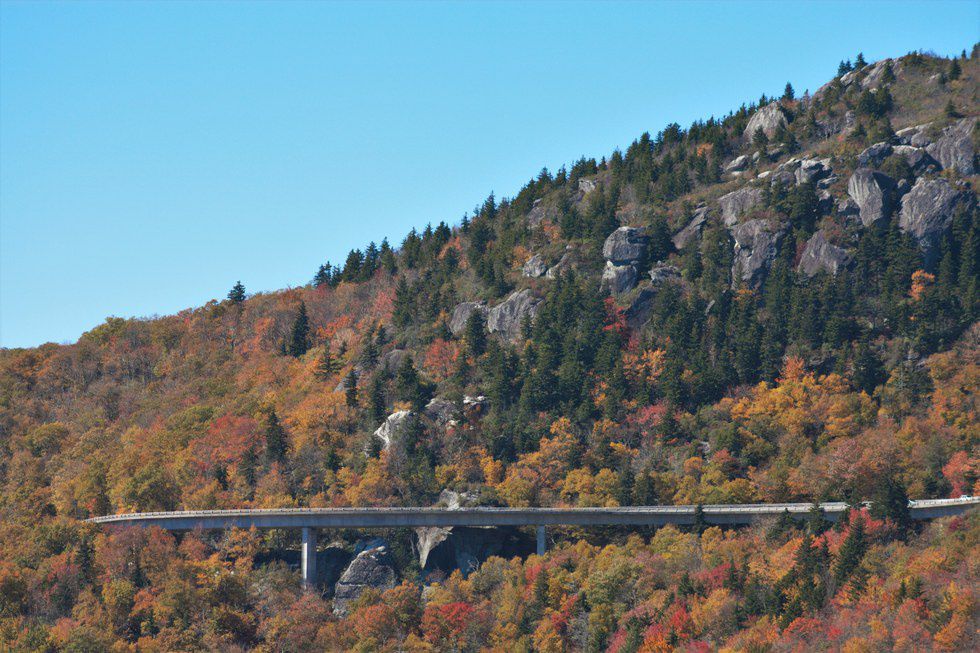Picture yourself traversing a mountain range – lush, green forests, clouds wrapped around the peaks establishing a mysterious aura. As it turns out, you can actually experience this if you visit Great Smoky Mountains National Park on the border of North Carolina and Tennessee. As part of the timeworn Appalachian Mountain range, the Smokies form part of the Blue Ridge subrange that is characterized by the blue tinge hovering over the surrounding midlands. Tucked at the base of the Great Smoky Mountains and the Cherokee Indian Reservation, is the south entrance to the Blue Ridge Parkway.
(Balsam Gap, Blue Ridge Parkway)
The Blue Ridge Parkway is a stunning, 469-mile national parkway that serpentines through the Appalachian Mountains in North Carolina and Virginia. The breathtaking views are accessible year-round, though sections of the Parkway do close when there is inclement winter weather. Some of the most astounding natural landmarks located on the route include Looking Glass Rock, Mt. Mitchell (the highest peak east of the Mississippi River), Linville Gorge and Linville Falls, Grandfather Mountain (featured in Forrest Gump), and Humpback Rock. These scenic destinations are great for day-hikes along the route, providing easy hikes with high reward. My personal favorites are Linville Gorge and Grandfather Mountain, both of which feature plenty of hiking and camping options.
(Black Mountain Crest Trail, Mt. Mitchell State Park)
The three major “urban” areas, from north to south, are Asheville, Boone, and Roanoke. Between the entrance of the Parkway and Asheville you can visit Looking Glass Rock and the nearby waterfalls, but if you happen to have a swimsuit with you I’d recommend stopping at Sliding Rock. As the name suggests, it’s a large, smooth rock face with water running down it, making it a natural water slide with a pool at the bottom. Once you reach Asheville you can stop and embrace the vibrant arts scene downtown, or you can head to the palatial Biltmore Estate which was commissioned by descendants of railroad tycoon Cornelius Vanderbilt. If you’d rather just grab a beer, Asheville is also home to one of two Sierra Nevada Brewing Co. breweries. You can choose from a variety of tours to suit your needs at the Mills River brewery. Just north of Asheville you’ll reach the entrance of the 6,684 foot Mt. Mitchell. From the Parkway to the peak is just a few minutes, so it’s definitely worth a stop. If you choose to hike around the area, I recommend the Black Mountain Crest Trail.
(Linn Cove Viaduct, Blue Ridge Parkway)
Continuing north for a couple of hours will put you in the Blowing Rock and Boone area. Blowing Rock is a charming little town featuring many downtown shops and restaurants, including Kilwin’s Chocolates (highly recommended). Grandfather Mountain and its Mile-High Swinging Bridge are located just outside of Blowing Rock. With 360-degree views of the surrounding mountains, the trip up to Grandfather is definitely worth it. My favorite part of the Parkway lies between Linville Gorge (just before Grandfather Mountain) and Boone. It features the notorious Linn Cove Viaduct, as well as several scenic lakes. Boone itself is a college town, home to Appalachian State University, but there are plenty of great restaurants and hikes spread throughout the area. From Boone, it’s a short drive up to Virginia where the Parkway straightens out a bit more, though the 45 mph speed limit remains… The Virginia portion of the Blue Ridge Parkway is generally considered less scenic, though the city of Roanoke has several museums and parks to visit.
The northern end of the Blue Ridge Parkway gives way to the scenic Skyline Drive, which is a separate National Parkway located along the ridge of Shenandoah National Park. So, whatever your reason may be for visiting the North Carolina and Virginia highlands, don’t leave without heading to the Blue Ridge Parkway. If you start on the northern end, you’ll have the luxury of visiting Skyline Drive. If you start on the southern end be sure to visit the Cherohala Skyway!













































